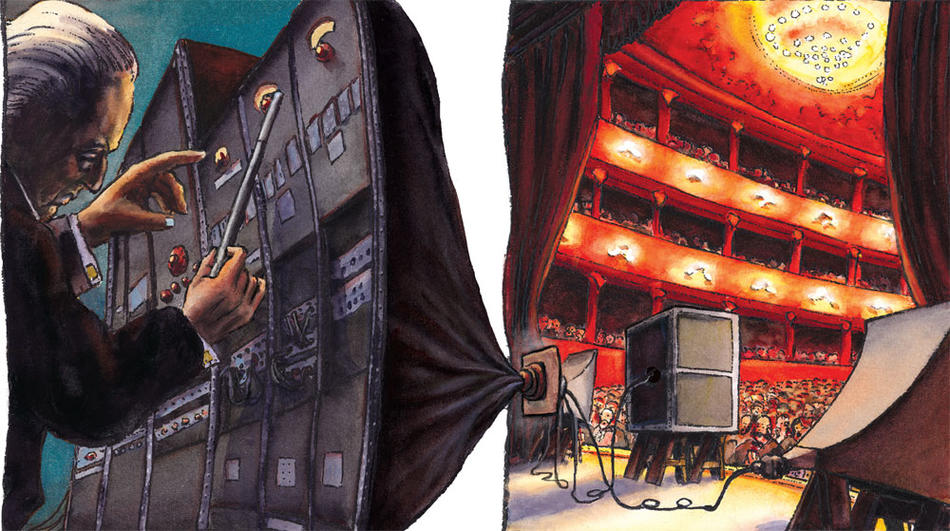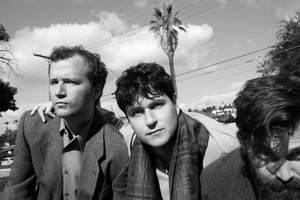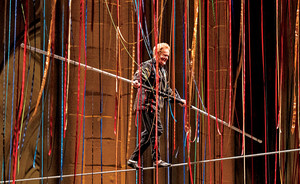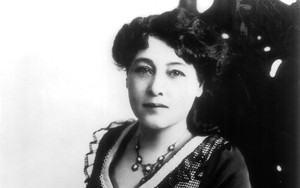In January 1950 my future suddenly changed from aerospace to acoustics and music — thanks to an unexpected, fortuitous interview.
Among other job interviews during my senior year studying electrical engineering at the University of Utah, I had an appointment to meet James Fletcher '40CC of Hughes Aircraft Company. But when Fletcher was called away on business, I instead met with his father, Harvey Fletcher, the world-famous physicist in speech and hearing at Bell Telephone Laboratories. His illustrious reputation was intimidating, but his friendly smile and handshake immediately put me at ease.
Upon retiring from Bell Labs, Fletcher planned to take a position as an electrical engineering professor at Columbia while establishing a joint musical research institute with Juilliard. He wanted to explore the physical spectrum of existing musical instruments and new possibilities of electronic music. I mentioned my deep interest in music, that I attended classical concerts whenever I could and sang in the university chorus, but I admitted that my knowledge of acoustics went only as far as a few courses in physics.
It was then that Fletcher said to me, "Never mind working at Hughes. How about you come to Columbia for your graduate studies and work as my research assistant to pay for your expenses?"
I leaped at the chance. My wife had recently completed a one-year scholarship at Juilliard and wanted to continue studying piano in New York. Although we had just discovered that our first child was on the way, we had the youthful daring to strike out on our own, far from our families in Utah. So in August 1950, we stuffed our 1946 Dodge sedan and drove east.
Even with my energy and enthusiasm, the combination of work, studies, and family was exhausting. Early each morning, I would carpool to Columbia from Rockland County, New York. That first semester I was happy just to get passing grades — especially with our baby arriving during finals week. In addition to my graduate work, I played catch-up in a few prerequisite subjects not included in my undergraduate courses. In the afternoons, I assisted in the lab section of Fletcher's class on the fundamentals of acoustics, including analysis of the sounds of individual orchestral instruments. Any free time I had on campus was spent on Fletcher's pet project: a demonstration of the first reproduction of high-quality stereophonic sound.
In 1933, Fletcher and his research group had successfully transmitted a live performance at the Academy of Music in Philadelphia over AT&T telephone lines to Constitution Hall in Washington, D.C. The audience in Washington had been invited to hear a concert of Bach, Beethoven, Debussy, and Wagner by the Philadelphia Orchestra. They sat facing a closed curtain, behind which they believed the actual orchestra was playing. In Philadelphia, the assistant conductor was leading the orchestra, while in the back of the Washington hall, Maestro Leopold Stokowski used a control unit to manipulate the amplifiers of the three-channel system so that the dynamic range of the sound coming from the speakers went beyond what was possible from the signals in Philadelphia. By adjusting levels, Stokowski could make parts of the orchestra come in higher and lower as he saw fit. It was a convincing demonstration of the possibilities of live stereophonic sound reproduction. When the curtain parted at the end of the performance, the people gasped to find a bank of loudspeakers producing the music, not a live orchestra. A few years later, Fletcher's team returned — this time with a four-track optical film recording technique that offered greater fidelity and dynamic range. Fletcher specifically requested the orchestra to play Stravinsky's Firebird Suite because its rich harmonic structure and thundering climaxes showed off the system's advanced technology.
In 1950, Fletcher brought the system and optical films to Columbia to demonstrate their capabilities to the faculty and researchers. The trouble was that much of the equipment was in disrepair, and it was one of my jobs to get it running. Whenever I had time that fall semester, I made the frigid walk across campus to Philosophy Hall, whose dreary basement offered the only space large enough to house the system's four-track optical film-reader machine, seven racks of preamps and power amplifiers, connection panels and power supplies, three 5x5x5-foot folded-horn bass speakers, and three arrays of mid- and high-range horn speakers.
Every time I thought I got everything working, something else would go wrong. It was frustrating and lonely work in that basement. My only neighbor was the famed FM radio inventor and electrical engineering professor Edwin Armstrong, who had become so consumed by legal battles over infringements of his numerous patents, he allowed no one in his lab except his loyal assistant.
After a semester's worth of work, one late afternoon in December 1950, I finally reconnected and fixed all the necessary parts and tried for a test run. I loaded a 35mm reel of the Philadelphia Orchestra's recording of Stravinsky's Firebird Suite into the film reader, crossed my fingers, and turned on the system.
The music that burst forth was unbelievable! The deep bass sound from three huge speakers literally made my necktie flutter. When the music ended, I could hear voices up on Amsterdam Avenue. When I looked up through the air well, I saw a crowd of people looking for the source of this amazing, beautiful sound. They must have been as befuddled as that first audience in 1933, no doubt convinced that a live symphony orchestra was playing in the bowels of Philosophy Hall. The revived system was able to perform just a few demonstrations before some irreplaceable parts gave out the following spring.
In July 1960, I left my assistant professor position at Columbia to become a research member at Bell Labs. I also learned to play the cello, performing chamber music with some colleagues during for-our-ears-only concerts at home. Even after 37 fascinating years at Bell Labs, I never forgot the afternoon when a firebird caused a flutter.



